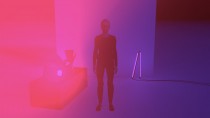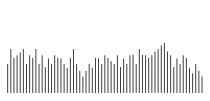The term VJ originated around the early 90′s, back then artists were limited to using tools like 16mm and later VHS to mix together moving images. To everybody around then visuals were about making (what was derisively termed) moving wallpaper and was often seen as secondary to the musical experience on offer at the time. What brought these practitioners together was an shared interest in projectionism and in the performance space that club culture offered video artists. This newfound freedom to experiment and invent in a social space sparked a new fusion language of technology, architecture, music and light.
At its core live visuals can be seen as continuation of a tradition that has existed since the inception of cinema itself. This movement is in direct opposition to cinema and is constantly trying to free itself from its rigid format by embracing improvisation and alternative projection spaces in an effort to create a form of language that can adequately describe the increasingly unstable and fast changing world around us.
All modern technology – electricity, mobile phones and our ability to permanently illuminate the world – stem from unraveling the mystery of light. Video Mix artists are on a similar quest attempting to gain ever more control over light, creating new tools that allow them to investigate space, time and our interconnectedness to it.
These new ‘real-time’ tools are opening up completely different worlds for contemporary VJs, taking them beyond free flowing visual performances in club land; to becoming Inter-media artists working with trans-disciplinary methods towards building programmable environments.
Some of the best Video Mix Artists are also software artists in their own right. Neuromancers that believe the act of code writing itself is very important, (regardless of what this code actually does at the end) because the actual message is expressed in the abstract new mediums that they create.
Whether its about live audiovisual performances, controlling lighting systems, interactive environments, light sculptures or immersive 3D spaces –software becomes the central working media, consuming all that came before.
Software like VVVV, Isadora, Max/MSP/Jitter and Quartz Composer are some of the most popular toolkits available for real time video synthesis – they are graphical programming languages, which allow you to draw a program rather than write it. These programs are designed to facilitate the handling of physical external interfaces (Midi/Wireless/Touch controllers) in combination with real-time motion graphics output.
Noodle based graphical programming applications like VVVV (PC) and Quartz Composer (Mac) use a “visual programming” interface, wherein programs are created by connecting various functional blocks of code by “wires” or “noodles”. In this way, they provide an easy method for the prototyping and development of software that can open up real and imagined rich sensory spaces.
Here are a few examples of what people are making just now.
1024 (formerly EXYZT) experiment with real-time graphics in architectural spaces. This demo video shows really nice synergy between sound and light.
Robert Hodgin uses Processing to achieve amazing results with code based visuals.
David Dessens uses VVVV software to achieve these great generative visuals from superformula.
Apparati Effimeri are a collective who specialise in interaction and Motion design for the visual environment.
The “Polygon Playground” is a large scale interactive lounge object, where up to 40 persons at a time to walk, sit and explore its multifaceted surfaces.
A Video artist who experiments in VJ software, data visualization and writing tools is Vade. He produces some great custom plugins for Quartz Composer including the great OpenEMU project that allows the user to remix old skool 8 Bit video games.
Find out more about YuVA here.
/////
Mix-Blog: A bit like a mix-tape but with blogs instead. Read more from the series here.














Comments